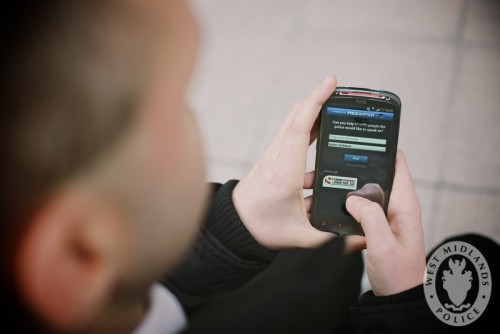Supreme Court takes a stand for limited government — again and again

By Eric Boehm | Watchdog.org
MINNEAPOLIS — The Supreme Court is the most libertarian branch of the federal government.
Yes, the Supreme Court. The same body that once ruled the federal government had the authority to regulate wheat grown for home consumption — under the odd rationale that wheat not being sold was subject to the constitutional provisions giving Congress the right to regulate interstate commerce — is now perhaps the only part of our three-part system of governance that still believes in limited government.
That’s no small detail, particularly not on the Fourth of July.
America’s founders carefully developed a system of checks and balances to ensure the federal government would be deliberately limited to what it was allowed to do — each branch is, in theory, able to stop the others from acting or to overrule them once they have acted.
Too often, it seems that has been lost in modern politics.
But this past month has been a reminder that some of those checks still work. Faced with a gridlocked Congress and an ever-growing, imperial executive branch — taking advantage of the gridlocked Congress, which has lost its ability or desire to check and balance — the nine robed justices on America’s highest court have signaled that there is some hope for limited government in Washington, D.C.
And they’ve done so not one, not twice, but actually four times in the span of a few weeks. If you haven’t been paying attention, here’s what you’ve missed — four decisions that all favor personal freedom, individual responsibility and — most importantly— check the power of big government.
HANDS OFF: In a unanimous ruling, the Supreme Court told police departments they must get a warrant to search the contents of a mobile phone.
Riley v. California
What was at stake: Whether police officers are allowed to search the contents of a cell phone in the possession of someone under arrest. The case started in California, where David Leon Riley was convicted of attempted murder for shooting at a car with a semi-automatic weapon. He was not arrested when the crime was committed, but months later he was stopped for driving with an expired license; police seized his cell phone and used the contents of the phone — without a warrant — as evidence of the crime.
What the government argued: Basically, that the Fourth Amendment doesn’t apply to cell phones. In a legal brief submitted to the Supreme Court, the U.S. Justice Department said police should have the right to search cell phones without a warrant because of an established legal precedent that allows police to search the belongings of a person arrested “on the street.”
What the judges ruled: The Supreme Court bought none of what the feds were selling — a unanimous court ruled police must get a warrant before searching the contents of a cell phone, in what legal observers called a huge win for privacy by setting a “major standard for the digital age.”
“Our answer to the question of what police must do before searching a cell phone seized incident to an arrest is accordingly simple: get a warrant,” wrote Chief Justice John Roberts.
Why it’s awesome: Congress — and state legislatures — has many incentives to increase the authority of law enforcement, and obviously the executive branch is doing almost everything it can to expand the scope of what police can do. But a unanimous opinion from the Supreme Court shows that legal minds from all sides of the political spectrum can agree on the importance of upholding the Fourth Amendment and defending Americans’ privacy. Check, and balance.
WE’LL DECIDE THAT: The U.S. Senate has the right to decide when the U.S. Senate is in session, the Supreme Court ruled.
NLRB v. Noel Canning
What was at stake: Whether the president had the authority to appoint members to the National Labor Relations Board — or any government board/commission, for that matter — without approval from the U.S. Senate by using “recess appointments.” even though the Senate was not recessed.
In 2012, President Obama tried to appoint three members to the NLRB, which at the time had only two members and did not have the quorum required for it to operate, while the U.S. Senate was not conducting business. But the Senate had declared itself to still be “in session” — basically, one senator would show up each day, bang the gavel twice and go home — even though it was not doing anything.
What the government argued: The president is allowed to make recess appointments when Congress is not in session, a rule established in the U.S. Constitution. The Obama administration argued that it could decide when the Senate was not in session, and that the president should be allowed to make appointments when the chamber is holding nothing more than “pro forma” sessions.
What the judges ruled: It was another bad day for the Obama administration, as the court again ruled unanimously against it. The justices held that the Senate was the sole determinant of when the Senate was in session, and the executive branch has to follow the constitutional rules regarding executive appointments.
“The Senate is in session when it says it is,” wrote Justice Stephen Breyer, one of the more liberal members of the court, in a clear rebuke to the Obama administration.
Why it’s awesome: It’s a major blow to the power of the executive branch — not just the Obama administration, but all administrations to come. With so much of the federal government’s day-to-day activities now guided by boards, commissions and agencies — the NLRB, the EPA, the FCC and on and on and on — this ruling means Congress continues to act as the gatekeepers. And it means lots of recent decisions by the NLRB will have to be revisited.

CAN’T BE FORCED TO COVER IT: Some types of businesses are allowed to not cover all types of birth control, the Supreme Court ruled. Women still have access to all forms, however, even if they might have to pay for some of them out-of-pocket.
Burwell v. Hobby Lobby Stores, Inc.
What was at stake: Whether certain types of businesses could object to offering certain forms of birth control based on religious objections to abortion. The owners of Hobby Lobby, a national chain of stores, objected to regulations from the U.S. Department of Health and Human Services requiring they provide no-cost health coverage for forms of birth control that essentially prevent a fertilized egg from developing.
What the government argued: There were several lines of argument, but basically the federal government argued that corporations were not persons and therefore could not have religious objections to regulations.
What the judges ruled: This one wasn’t as clear-cut — it was a 5-4 ruling along ideological lines with the court’s more conservative justices winning the day by ruling that Hobby Lobby was allowed to refuse to pay for certain types of birth control.
Why it’s awesome: The court chipped away at one of the one-size-fits-all rules created by the Affordable Care Act while affirming that there are limits to what the federal government can require businesses to do. And two of the liberal justices — Breyer and Justice Elana Kagen — who ruled against Hobby Lobby filed a separate dissenting opinion in which they also disagreed with the Obama administration on the question of corporations’ religious objections.

PAM WINS: Pam Harris, the home health-care worker at the center of the legal case decided this week by the Supreme Court, does not have to participate in a public sector union, the Court ruled.
Harris v. Quinn
What was at stake: Could unions require that home health care workers — that is, people who act as caretakers for other individuals living in their homes — pay “fair share fees” to support the union.
What the unions argued: Attorneys for the union sought to affirm a 1977 ruling that established the right of public sector unions to represent public employees, even though who did not want to join the union, and to impose compulsory union dues. In this instance, however, they wanted to expand the scope of who counts as a “public employee.”
What the court ruled: This was another ideologically divided 5-4 ruling from the bench, but the majority on the court said unions could not force public employees to join or financially support a union — a decision that barely scratches the surface of a fight that is sure to heat up at the state and local levels in years to come. The majority opinion leaned on the First Amendment, pointing out that workers can freely associate — or refuse to associate — with any group they choose.
Why it’s awesome: It’s not exactly a blow against the government — though in oral arguments, Justice Anthony Kennedy did note that the size and power of public sector unions is directly related to the size and power of government — but we can celebrate any ruling that says people are free to do as they chose without coercion.
Boehm can be reached at EBoehm@Watchdog.org and follow @Watchdog.org on Twitter for more.







